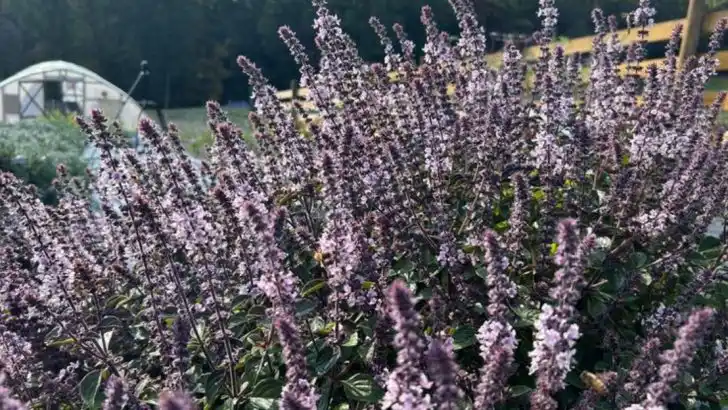If you’ve ever grown African Blue Basil, you already know it’s more than just a pretty face in the garden—this bush basil is a bee magnet, a culinary treasure, and a lush ornamental all in one. But to keep it from getting leggy or losing its intense aroma, a few thoughtful care strategies can make all the difference. Whether you’re growing it in a pot or planting it directly in your herb bed, giving it the right attention will keep it looking bushy, bold, and bursting with flavor.
From pruning tricks to watering tips, these 13 ideas will help you keep your African Blue Basil thriving through the whole growing season. With its unique purple stems, lavender blooms, and spicy-sweet scent, this basil is worth the extra care—and the payoff is a plant that looks great and tastes even better.
Sunlight Balance
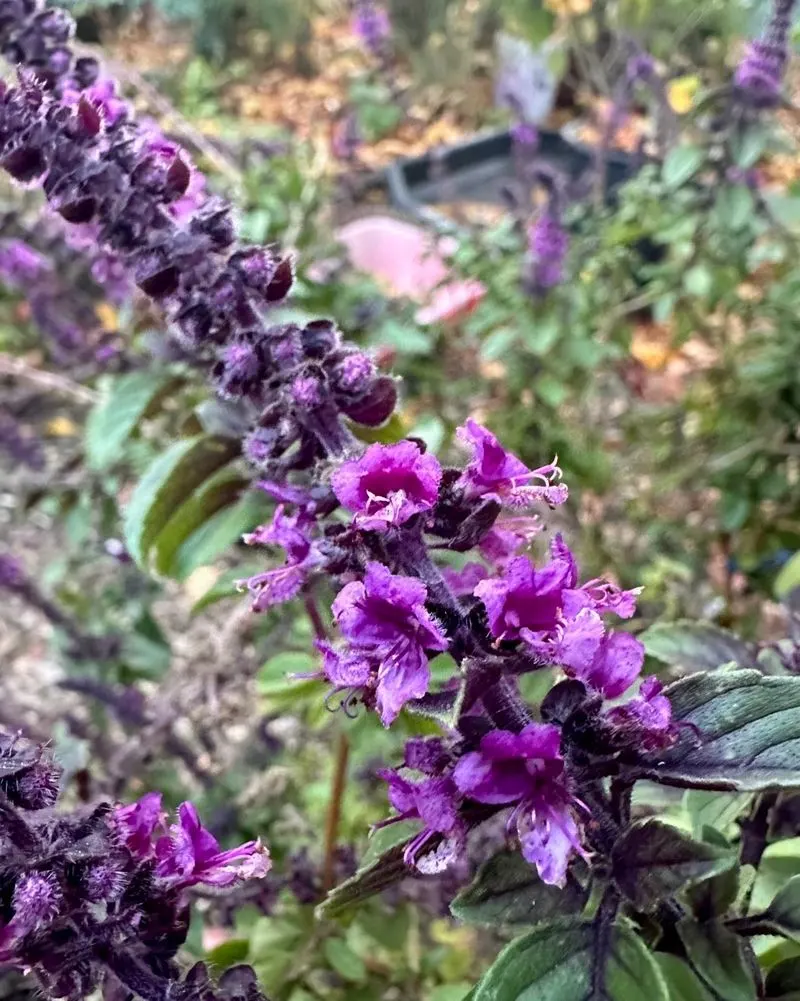
Bright light is essential for African Blue Basil, promoting lush growth and vibrant colors. Position your plant where it can bask in the morning sun, but shield it from harsh afternoon rays. This balance helps avoid scorching and ensures robust foliage. Consider using a sheer curtain if indoors to filter direct sunlight. Regularly rotate the pot to encourage even growth on all sides. With appropriate lighting, your basil will not only thrive but also reward you with enhanced flavors. A sun-kissed basil bush is a happy, healthy one.
Water Wisely
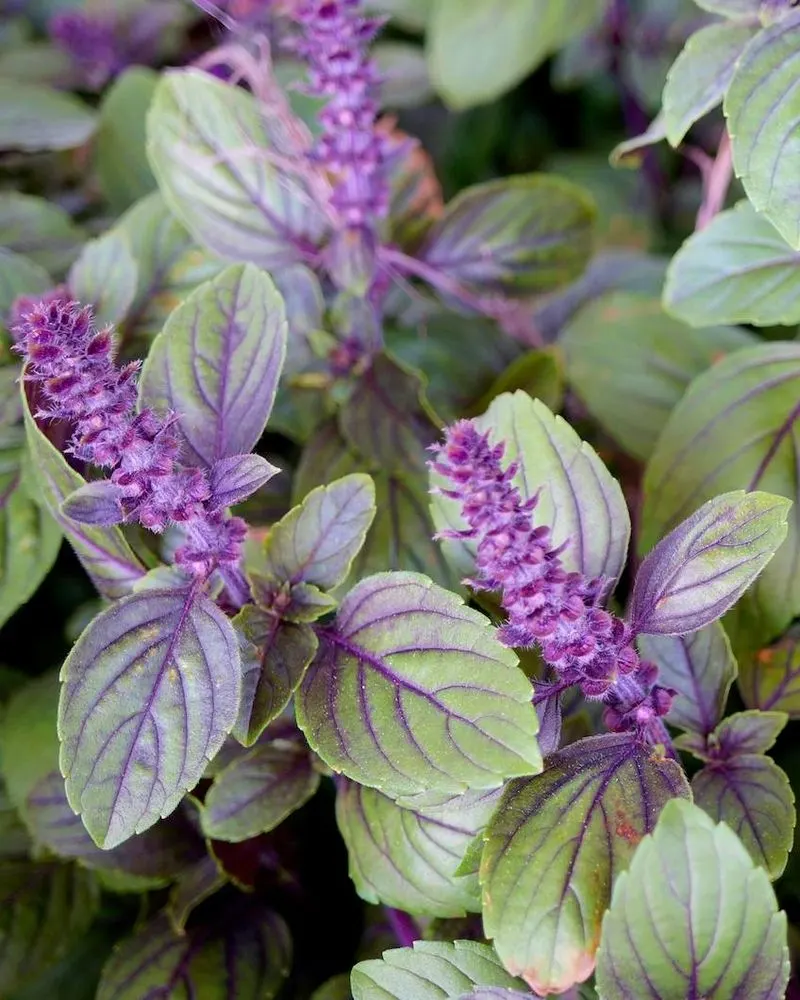
Proper watering is crucial for maintaining the vitality of your basil bush. Over-watering can lead to root rot, while under-watering may cause it to wilt. Always check the soil moisture before watering—insert your finger about an inch deep. If it feels dry, it’s time for a drink. Use lukewarm water to avoid shocking the plant. Watering early in the morning allows the plant to absorb moisture before the day’s heat. This thoughtful approach keeps your basil bush hydrated and full of life.
Soil Perfection
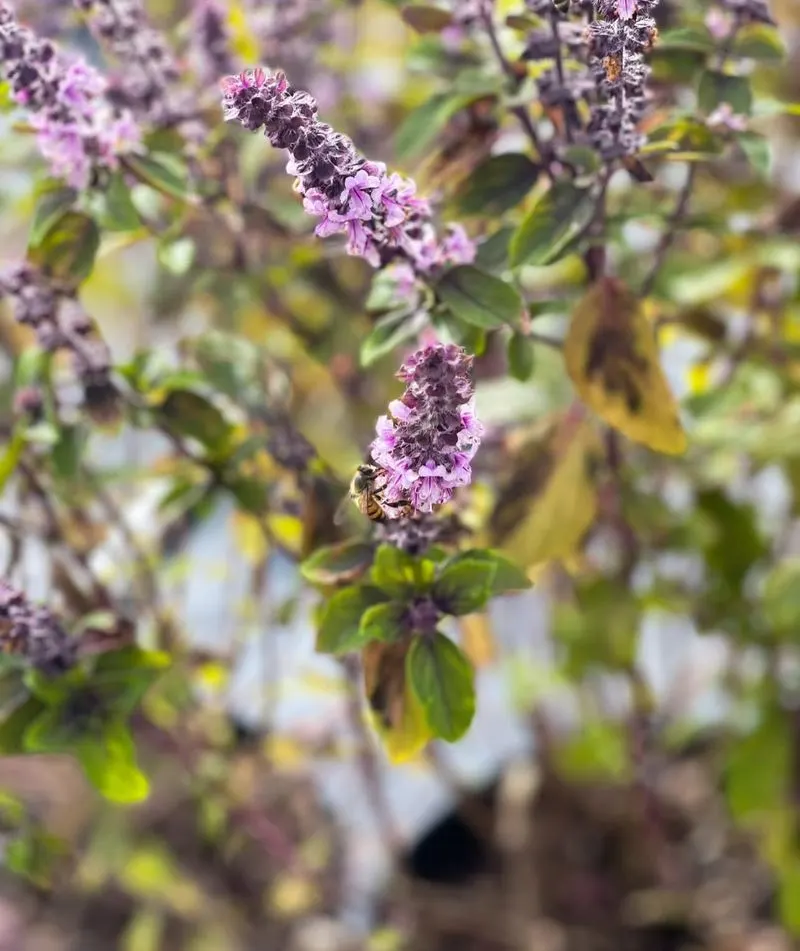
The foundation of a healthy basil bush starts with rich, well-draining soil. Opt for a potting mix that retains moisture but doesn’t become soggy. Incorporate organic matter like compost to provide essential nutrients. A slightly acidic to neutral pH level is ideal. Test your soil if unsure; kits are available at garden centers. Replenishing the soil annually or when repotting revitalizes your basil. This nurturing environment supports robust growth, allowing your plant to thrive and produce aromatic leaves.
Prune with Care
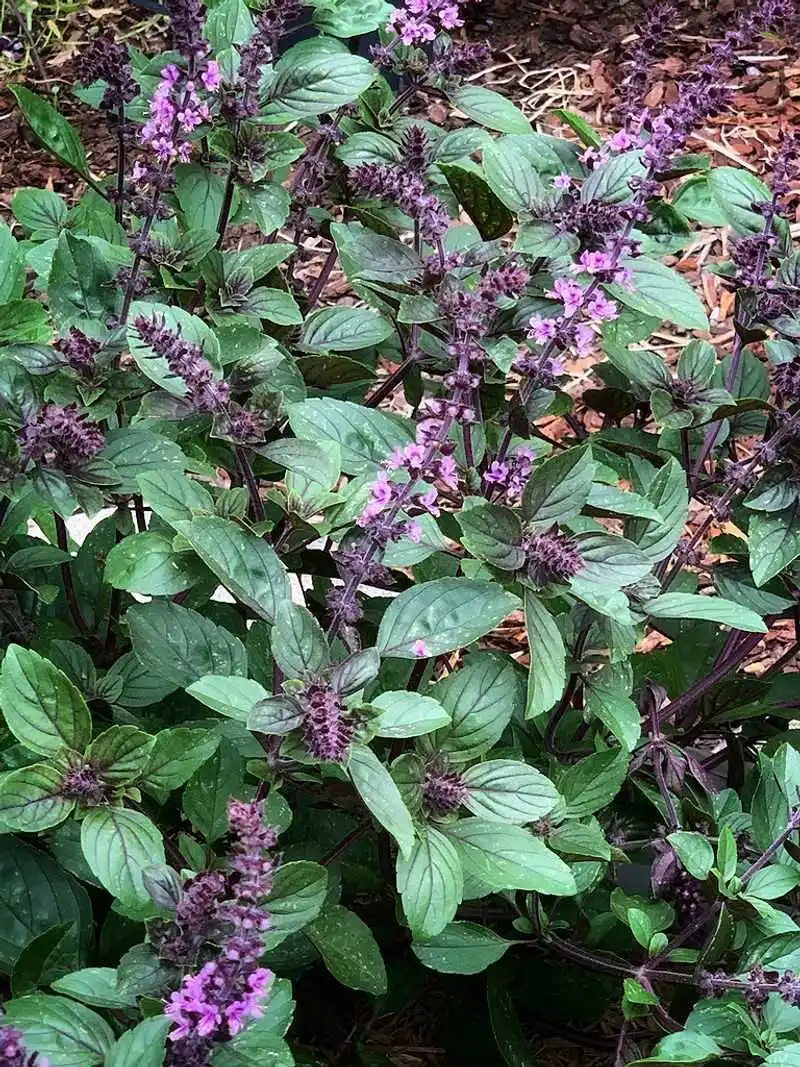
Regular pruning encourages a bushier basil plant, preventing it from becoming leggy. Begin by pinching off the top sets of leaves to stimulate side growth. Focus on removing any flowers, as they can redirect energy away from leaf production. Always use clean, sharp scissors to prevent disease. Prune every few weeks, or more often if your plant is flourishing. This attentive care not only maintains the desired shape but also enhances the plant’s vitality and flavor, keeping it productive longer.
Companion Planting
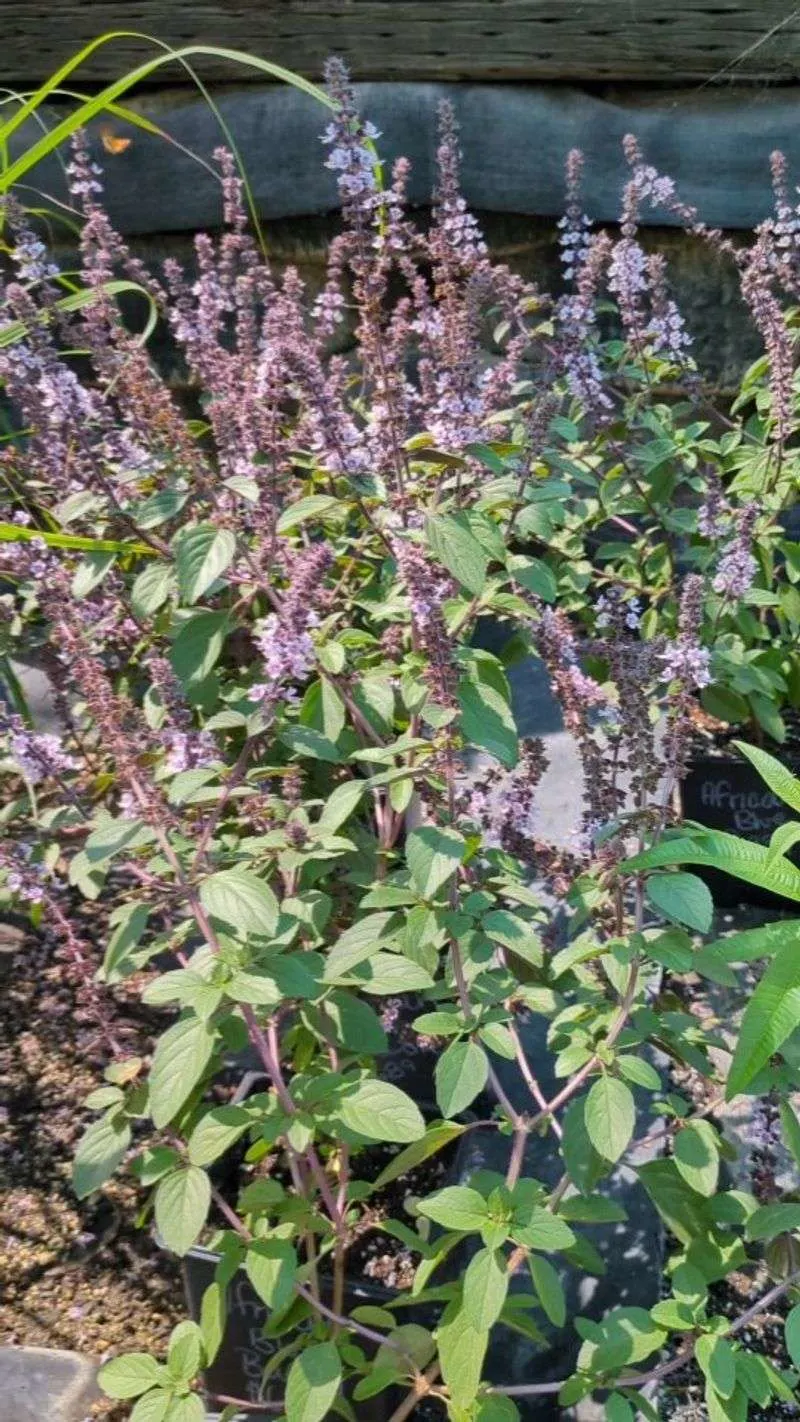
African Blue Basil thrives when grown alongside certain plants, benefiting from companion planting. Tomatoes and peppers make excellent neighbors, as basil can enhance their flavors and deter pests. This symbiotic relationship promotes healthier, more resilient crops. Ensure each plant has enough space to prevent overcrowding. The visual appeal of mixed planting also adds a delightful touch to your garden. By choosing the right companions, you’ll create a vibrant ecosystem that supports the well-being of all your plants.
Feeding Fundamentals
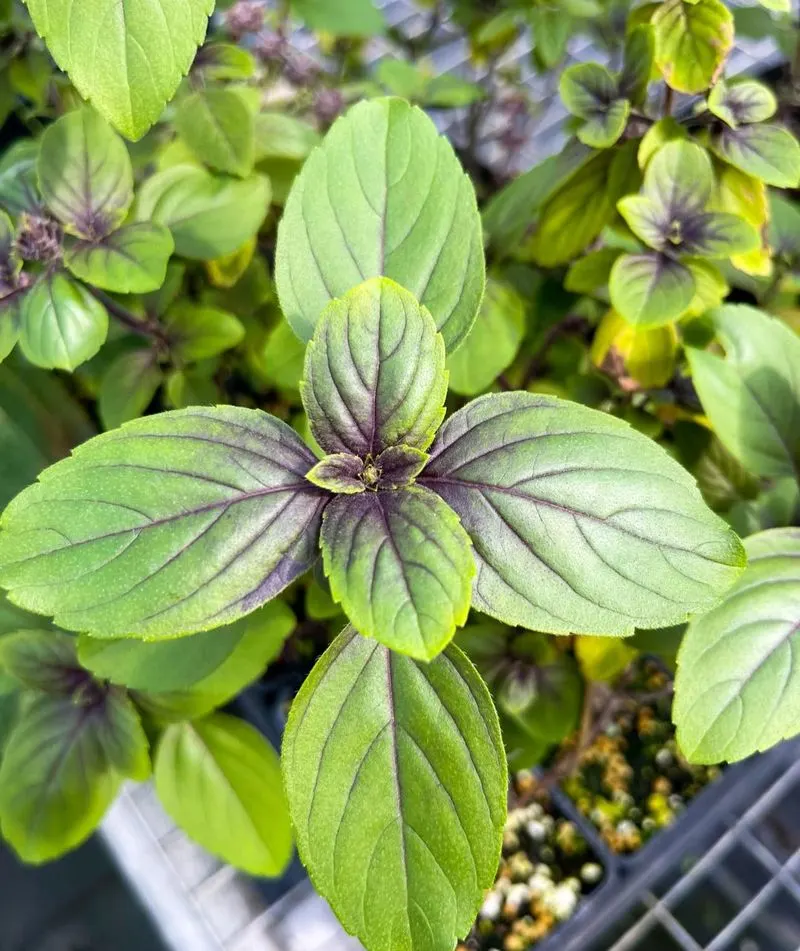
Nourishing your basil bush with the right nutrients ensures sustained growth and flavor. Use an organic fertilizer every 4-6 weeks during the growing season. Look for one rich in nitrogen to support leaf development. Avoid over-fertilizing, as this can lead to excessive leaf growth with reduced flavor. Adjust feeding frequency based on your plant’s response, observing any changes in color or vigor. This balanced feeding routine keeps your basil lush and aromatic, ready to enhance your culinary creations.
Pest Patrol
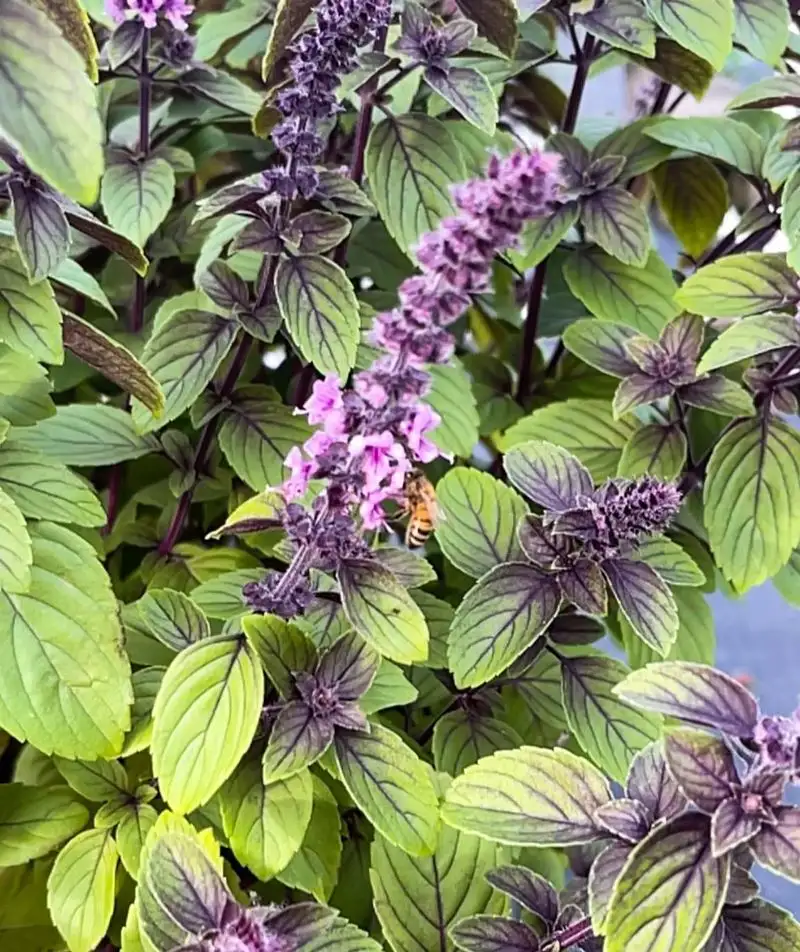
Keeping pests at bay is essential for a thriving basil bush. Regularly inspect your plant for common invaders like aphids or spider mites. A gentle spray of water can dislodge many insects. For more persistent pests, consider neem oil or insecticidal soap. Always test treatments on a small part of the plant first. Encourage beneficial insects like ladybugs, which prey on harmful pests. With vigilance and natural remedies, you can protect your basil from damage and maintain its flavorful leaves.
Temperature Tolerance

African Blue Basil prefers mild temperatures, flourishing between 70-85°F (21-29°C). Extreme temperatures can stress the plant, affecting growth and flavor. In cooler climates, consider growing indoors or using cloches to extend the growing season. If outdoors, position it in a sheltered spot to protect from cold drafts. Awareness of your climate and its impact on your basil is key to maintaining a healthy, flavorful plant. By providing a stable environment, your basil will reward you with continuous growth.
Mulching Magic

Mulching is a simple yet effective way to conserve moisture and suppress weeds around your basil bush. Apply a 2-3 inch layer of organic mulch, such as straw or wood chips, around the base of the plant. This not only retains soil moisture but also improves soil quality as it breaks down. Be cautious not to pile mulch against the stem, which can encourage rot. This protective layer acts as a buffer against temperature fluctuations, promoting a stable and nurturing environment for your basil.
Harvesting Happiness
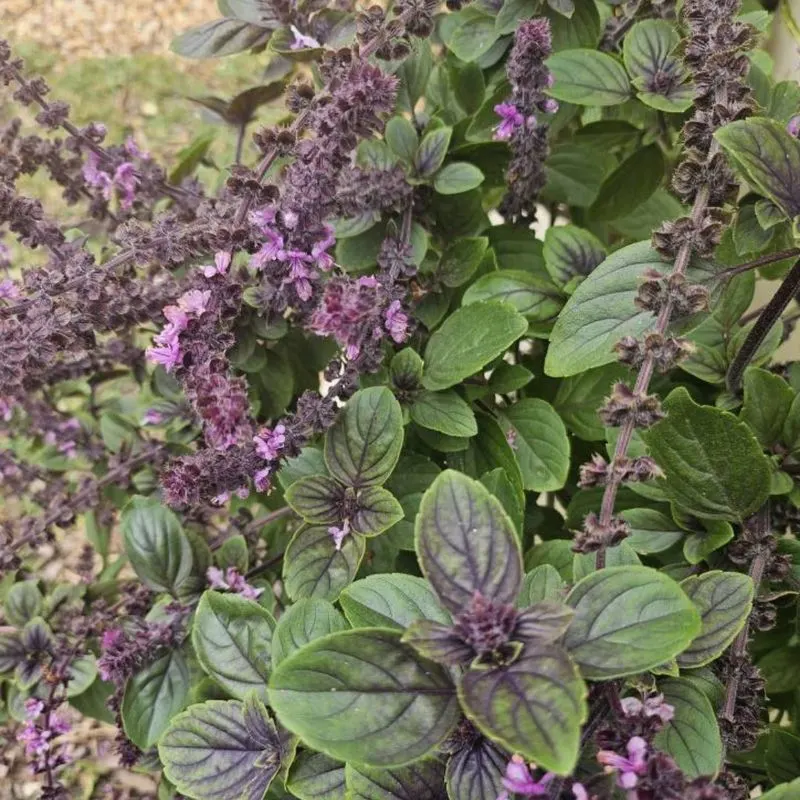
Harvesting basil is a rewarding task that encourages further growth. Pick the leaves regularly, starting from the top, to prevent flowering. Use sharp scissors to ensure clean cuts. Leaving some leaves on the plant helps sustain photosynthesis. The best time to harvest is in the morning when the essential oils are most concentrated. Freshly picked basil can be used immediately or preserved by drying or freezing. Frequent harvesting not only provides a steady supply of fresh basil but also invigorates the plant.
Overwintering Options

To enjoy basil year-round, consider overwintering your plant indoors. Choose a sunny window that offers ample light, or supplement with grow lights if needed. Reduce watering during this period, as growth slows. A consistent indoor temperature will prevent shock and promote gradual acclimatization. By providing a suitable winter habitat, you can maintain a continuous supply of fresh basil, ready for culinary use. This seasonal transition requires patience but offers a delightful way to extend your basil’s life and flavor.
Propagation Possibilities
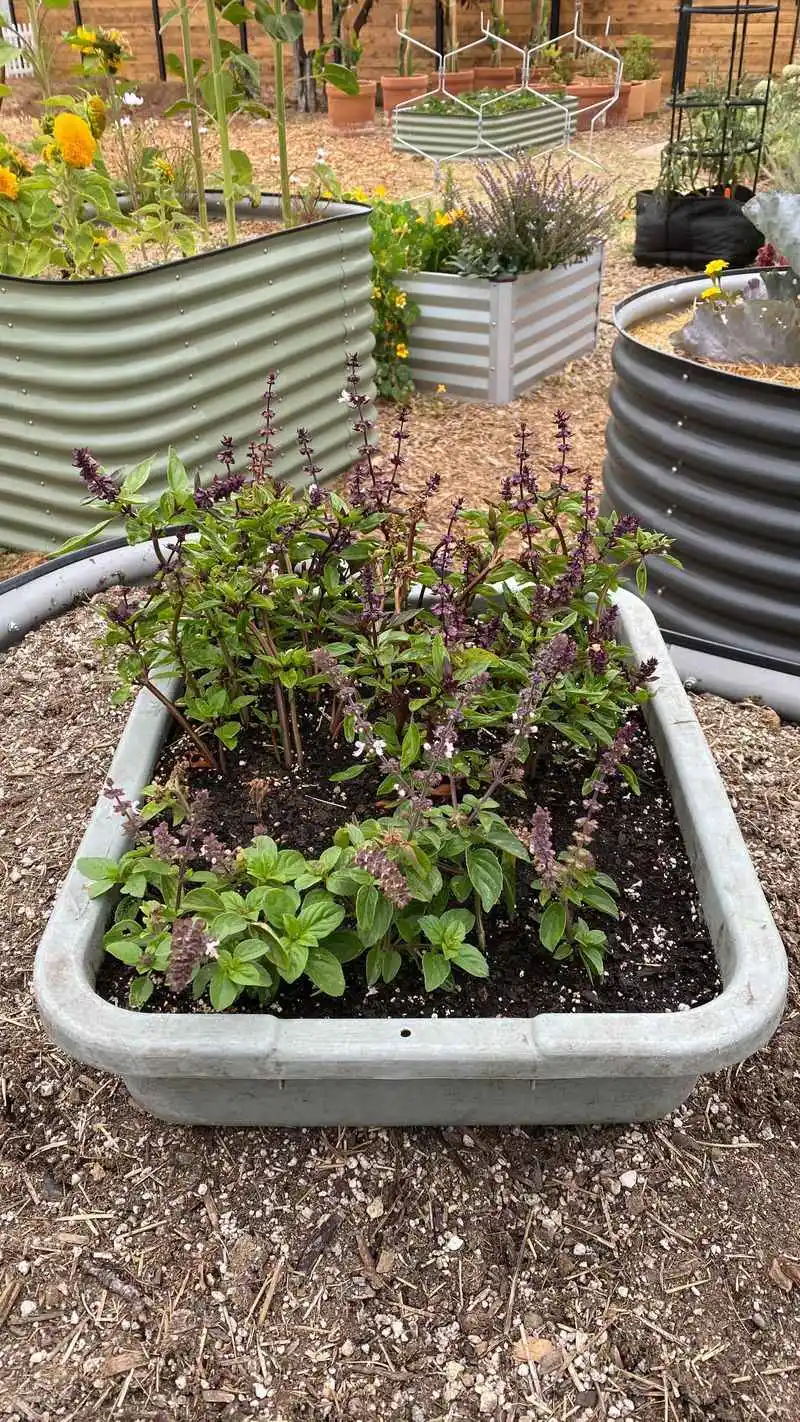
Propagating African Blue Basil allows you to expand your garden with little effort. Take healthy cuttings with several leaves, and place them in water to encourage root growth. Change the water regularly to prevent stagnation. Once roots develop, transfer the cuttings into soil. This method provides a cost-effective way to multiply your plants. Propagation not only increases your basil supply but also ensures that you always have fresh plants ready to grace your garden or kitchen windowsill.
Aromatic Appeal
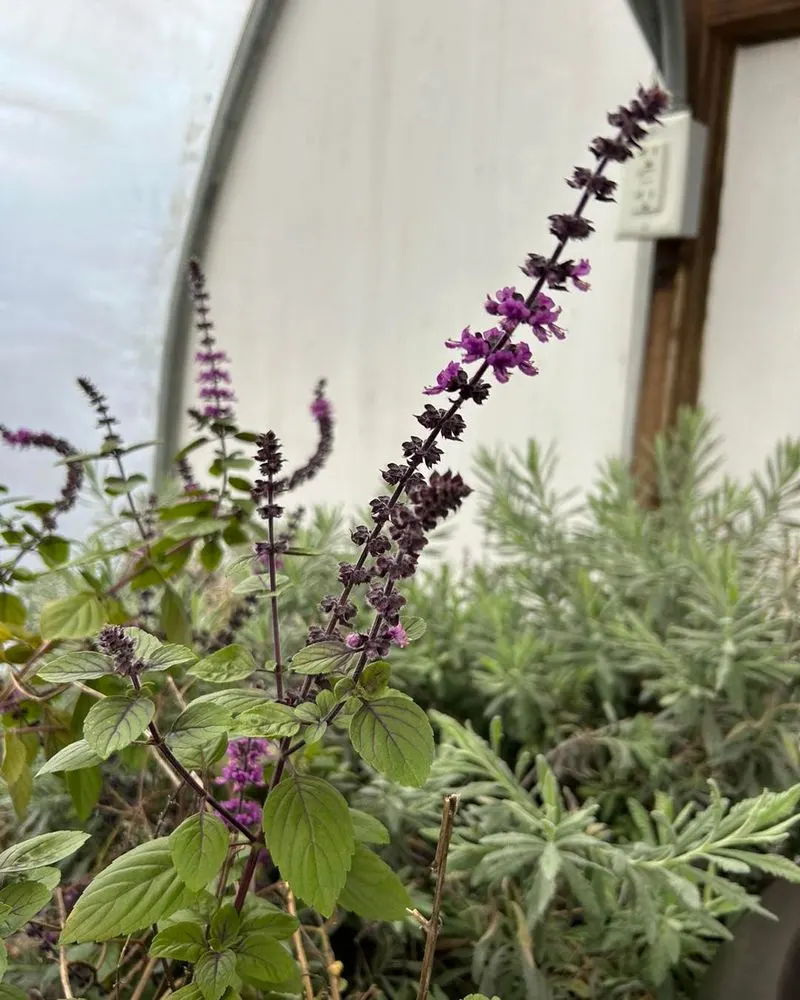
The aromatic nature of African Blue Basil makes it a favorite among gardeners and chefs alike. Its pungent scent deters pests while inviting a sense of tranquility to your garden or home. Incorporate it into your landscape design, near pathways or patios, to enjoy its fragrance with every breeze. Indoors, a potted basil provides a delightful aroma that enhances your living space. This sensory experience is a testament to the plant’s dual role as both a culinary and ornamental delight, enriching your environment.

